| The Anastatic Facsimilie of the Declaration of Independence |
 |
| Questions? Call us at 215-345-7955
or toll-free at 800-560-2545 |
|
 |
Anastatic Declaration exhibit
at Fraunces Tavern Museum |
 |
.jpg) |
Interview with
Philadelphia's 6 ABC |
 |
.jpg) |
Interview with
Fox News Channel
July 3, 2011 |
 |
.jpg) |
Interview with
Philadelphia's Fox WTXF-TV
July 4, 2011 |
 |
.jpg) |
Interview with
Des Moines, Iowa's WHO-TV
July 5, 2011 |
|
| Introduction |
Tom Lingenfelter, a dealer in rare historical documents and artifacts in Doylestown, Pennsylvania, has discovered the truest copy of the 1776 engrossed (handwritten) Declaration of Independence. A rarity in its own right, this anastatic facsimile also sheds some light on how the Declaration obtained its current status as a faded remnant of its original glory.
To truly understand the evolution of the Declaration of Independence, how we view it today and the significance of Lingenfelter’s find, a review of the several methods used to spread the awareness of the document and its ground-breaking effects on the rights of man is in order. |
| The Original Engrossed Declaration |
If we travel back in time to June 7, 1776, we would witness Richard Henry Lee of Virginia introducing a resolution in the Second Continental Congress “that these United States are and of right ought to be Free and independent States, that they are absolved from all allegiance to the British Crown and that all political connection between them and the State of Great Britain is and ought to be totally dissolved.”
On June 11th, Congress nominated a drafting committee of five under the direction of Thomas Jefferson, who drafted the Declaration along with John Adams (Massachusetts), Benjamin Franklin (Pennsylvania), Roger Sherman (Connecticut) and Robert Livingston (New York).
Over the course of three weeks, America’s elegant founding document was drafted among these five men. It was submitted to Congress for consideration on June 28th. On July 2nd there was a call for a vote. Twelve states voted “yes” with New York abstaining. On July 4th, after two days of vigorous debate and revision, Congress adopted the text of Declaration of Independence as we know it today.
On July 19th, Congress ordered an engrossed (handwritten) copy on vellum. It is believed Timothy Matlack, assistant to Secretary Charles Thomson, was the actual scribe who provided the final document to be signed by the representatives. By that time, Matlack was able to reflect the addition of New York’s affirmative vote on July 9th by titling the document “The unanimous Declaration of the thirteen united States of America.”
There is some question as to when all the final signatures were attached to this official engrossed copy. According to history books, many of them signed on August 2nd, but some hesitated before affixing their signatures at a later date. Their reluctance is understandable, considering that the document represented an act of treason, and in turn its signers would be branded as traitors to the Crown.
It is known that Thomas McKean of Pennsylvania was the last to affix his signature to the engrossed Declaration. An early official printing, ordered from Baltimore printer Mary Goddard in January, 1777, did not include McKeans name. McKean’s signature, possibly added as late as 1781, brought the final number of signers on the engrossed Declaration to 56.
Currently housed and displayed at the National Archives in Washington DC, the original engrossed Declaration is the most revered document in America, but its condition is quite diminished from its original glory. There is very little documentation of its condition over the years or how it came to be so diminished.
An audit performed by The National Academy of Sciences in 1891 asserted that the poor condition of the Declaration was attributed to attempts of a wet copy technique. |
| |
| |
| |
| |
| |
| |
| |
| |
| |
| |
| |
|
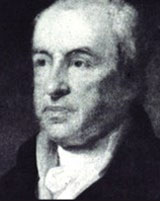 |
| John Dunlap |
|
| The Dunlap Copies |
Once the Declaration’s text was revised into its final form on July 4, 1776, the Continental Congress commissioned its official printer, John Dunlap, to typeset and print copies. Dunlap, working from a corrected manuscript and supervised by the drafting committee, produced approximately 200 broadsides for distribution to the thirteen states and elsewhere.
Dunlap is believed to have worked feverishly on the night of July 4th to produce his broadsides so they could be posted and read aloud on July 5th to alert the citizenry of this momentous event in time. As John Adams later wrote, “We were all in haste.”
The Dunlap copies do not carry the same title of unanimity as the original engrossed copy due to New York’s abstention until July 9th. Instead, the Dunlap copies carry the title “In Congress July 4, 1776, A Declaration by the Representatives of the United States of America in General Congress Assembled.”
One of these Dunlap copies was reportedly delivered to George Washington at Valley Forge to be read aloud to the troops. Another, currently housed at Independence National Historic Park in Philadelphia, was donated to the park by the heirs of Colonel John Nixon, the man appointed by the sheriff of Philadelphia to read the Declaration aloud in the State House yard on July 8, 1776.
Only 25 Dunlap Copies are known to still exist. The last Dunlap copy sold at auction was offered by Sotheby's on eBay on June 29, 2000 and brought $8.14 million from collector Norman Lear, who partnered with Silicon Valley investor David Hayden. This copy made a tour of the country to allow Americans to view it. |
|
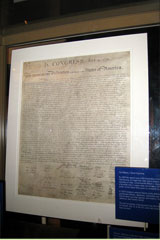 |
| William Stone's copy |
|
| The Stone Copies |
In 1820, in response to a wave of patriotism following the War of 1812 and in advance of the nation”s 50th birthday, John Quincy Adams commissioned Washington DC engraver William Stone to produce a facsimile of the original engrossed Declaration’s text and the 56 signatures of the members of the Continental Congress.
Stone required three years to complete his task and the results were a remarkably accurate engraved copper plate. History does not record his exact technique or methodology, but various rumors over the years included the employment of a tracing device, tracing and even a suspicion that Stone’s skills included those of a master forger.
A simpler answer, however, is much more likely. It is now widely accepted that Stone utilized carefully placed mirrors and his exemplary engraving skills in a painstakingly tedious process to create his printing plate. With the discovery of the Anastatic Declaration it is proven Stone was a master engraver as they are nearly identical.
Stone completed the engraving of the copper plate in 1823 and sold it to the State Department. A congressional resolution passed on May 26, 1824 with an order placed for 200 copies, on vellum. These copies were to be distributed to official repositories, significant office holders and the surviving signers of the Declaration, including Thomas Jefferson, John Adams and Charles Carroll. Two copies were given to the Marquis d’Lafayette when he visited America in 1824.
At 24 x 30 inches, the Stone facsimile is very close to the original engrossed Declaration in size. At the top is a line that reads “Engraved by W.I. STONE for the Department of State by order of J.Q. Adams Secy of State July 4, 1823.” After the 1823 printing this imprint line was burnished off of the copperplate and a new imprint was added to the bottom left, below the first column of signatures. "W. J. STONE WASHN."
Later printings from the Stone copperplate are the same size but printed on paper, not parchment or vellum, and have the imprint bottom left. Even with this alteration, collectors still prize later Stone copies on vellum.
Stone's copperplate is currently in the National Archives in Washington DC. |
|
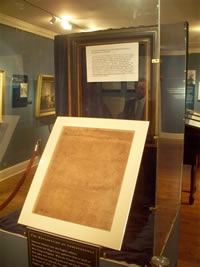 |
| Click to enlarge |
|
| The Anastatic Declaration |
Finally we come to the fascinating story of the Anastatic Declaration discovered by Tom Lingenfelter. Lingenfelter found his copy of the Declaration in a lot sale where it was originally alleged to be a memorabilia copy created for the Centennial. The document was covered in varnish. When he saw the words “ANASTATIC FAC-SIMILE” at the bottom left of his broadside he decided to Google the word anastatic."That’s when the name Edward Law of Ireland came to my attention and I began an e-mail correspondence with a collector of anastatic prints and books and subsequently became familiar with this long forgotten method of printing," said Lingenfelter.
Law’s website defines anastatic printing as “a form of facsimile reproduction invented and developed in Germany in the early 1840s and subsequently in England. It has been intended to reproduce old and rare works, but had the major failing that it sometimes destroyed the original without producing a copy.”
It is the latter portion of this statement that makes the Anastatic Declaration even more important and certainly much more rare than Dunlap or Stone copies. Lingenfelter believes the anastatic process radically accelerated the deterioration of the original engrossed Declaration now at the National Archives in Washington DC.
“Those who go to see the engrossed copy at the National Archives are shocked that it is barely visible. Its pale brown text on off-white parchment is impossible to read,” Lingenfelter said. “The Anastatic Declaration is a facsimile from a plate produced by a chemical transfer process that nearly destroyed the original engrossed Declaration.”
The Anastatic Declaration, then, is not just significant as a more rare, direct and exacting facsimile of the original engrossed Declaration than the Dunlap and Stone copies. Its significance is enhanced by an order of magnitude because the anastatic process itself had a detrimental effect on the original that led to its current faded condition. |
|
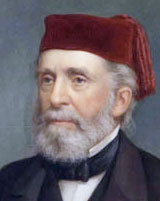 |
| John Jay Smith |
|
The Anastatic Process and John Jay Smith
|
The process was discovered by Carl Friedrich Baldamus of Erfurt, Germany in about 1840 and developed in conjunction with Werner Siemens. Edward Law reports that Baldamus and Siemens sought a patent on the process from Berlin that was granted on October 25, 1845 by the United States Patent Office.
John Jay Smith, Librarian of the Library Company of Philadelphia from 1829-51 brought the anastatic process from England to America. Smith visited Europe in 1845 and the following year published a two-volume recollection of his tour of England, Ireland, Scotland and Continental Europe, A summer’s jaunt across the water. Much of Law’s information about the anastatic process comes directly from A summer’s jaunt.
Soon after Smith’s arrival in London a friend called his attention to the investigation of the new art of anastatic printing. Michael Faraday conducted a major public demonstration of the process at the Royal Institution.
On August 2, 1845, three weeks before he sailed back to America, Smith signed an agreement with Charles William Siemens, acting for himself under power of attorney for his brother Werner and Baldamus for the promotion of the process in America. Smith brought with him to Philadelphia the necessary apparatus and information to pursue the business sufficiently to offer patents for sale in the different states.
“Being requested to control the patent for America, my son as well as myself passed as much time as we could spare in acquiring the knowledge of the manipulations necessary to teach the art,” Smith later wrote.
Smith was prepared to grant licenses and had a “small anastatic press is at work taking transfers and executing orders for copies of printed and manuscript matter.” He included a specimen page of printed matter with woodcuts in his Weekly Volume.
Smith’s detailed account of the process notes its importance to the United States as it “copies wood cuts, and even copper and steel engraving.” It also notes the shortcomings: “it had not yet arrived at its destined perfection, nor has the steam-press been entirely adapted to the work of printing zinc plates rapidly.”
Smith boasted that he was turning out “plans of roads, bridges, elevations, termini & with magic rapidity which saves months of the time of copiers” and that “it is only necessary that any plan should be drawn in lithographic ink brought to the anastatic office and in a few moments facsimiles are handed to the artist.”
He also predicted that as soon as the application of steam gave rapidity to the process, whole books and magazines would be reproduced: “The London Illustrated News, Punch, and such works with costly woodcuts may be republished in America at a small price.”
According to Law, the earliest likely notice of the availability of anastatic printing appeared in Smith’s November 1845 Weekly Volume, a select circulating library for town and country comprising the best popular literature. It mentioned the Washington patent for a “process of obtaining transfers or reversed fac-similes on metallic surfaces from designs or writing in lithographic ink and from prints and printing in general.”
The Library Company posted flyers during 1846 in which they advertised the Anastatic Printing process:
Robert P Smith agent for the Patentees of the new process of Anastatic Printing has presses at the Sunday School Union Building, No 144 Chestnut St third story where he is prepared to execute orders with which he may be favored. To Architects, Artists, Draughtsmen and Conveyances the art recommends itself by the perfection, facility and cheapness with which designs and drawings of buildings, plans, maps, sketches and writing are copied and multiplied from a single original on common paper when drawn in ink supplied at the office. Persons interested are invited to call at the Anastatic Printing Office and inspect specimens of transfers of sketches and writing, type, plans and pictures.
Research at the Library Company reveals several examples of anastatic printing, as Mr. Smith and his son desired to make the business venture successful by vigorous promotion of the process. It is this desire to promote the process that is thought to be responsible for the attempts to accurately image the Declaration of Independence, which by this point in time was becoming ever more popular in the eyes of the public.
Another popular item that also drew the interests of the Smiths was the 1681 Holmes Map of Pennsylvania. This was the first map of the Province of Pennsylvania and reflects the visual manifestation of William Penn’s Deed.[1] Smith published the Holmes Map using the anastatic process and the document still resides in The Library Company’s Collection.
Later in 1846, three substantial books made use of the anastatic process and all three are in the Library Company Collection.The first was a pattern book for artisans: [A] “guide for workers in metal and stone consisting of designs and patterns for gate, piers, balcony and cemetery railings, window guards, balustrades for staircases, verandahs, fanlights, lamps and lampposts, palisades, monuments, mantel, gas fitting, stoves, stands, candlesticks, silver and plated ware, chandeliers, candelabra, potters ware etc with various useful ornaments at large.”
Issued in four parts of 25 plates at $2.00 per part, the contents were selected by the architect Thomas U. Walter (noted for his Greek Revival building for Girard College and extensions to the Capitol in Washington) and John Jay Smith. The publisher was Lloyd P. Smith or Carey & Hart, both of Philadelphia.
Smith was also known to publish in 1846 the following works: “Two Hundred Designs for Cottages and Villas,” “Designs for monuments and mural tablets: adapted to rural cemeteries, church yards, churches and chapels with preliminary essay on the laying out, planting and managing of cemeteries and on the improvement of church yards” (John Jay Smith is the sole author), as well as the two volume set “American historical & literary curiosities: consisting of facsimiles of original documents relating to the events of the revolution.”
Some of the surviving plates have the imprint ANASTATIC OFFICE 144 CHESTNUT STREET, PHILA.
Society benefited from this new printing process, as it made documents more readily distributed and the cost of owning a piece of history was reduced to allow for more widespread access. This is witnessed by the fact that Anastatic prints of the Holmes map are not very rare.This is further evidence of the value of introducing new techniques for distributing near perfect copies of historic documents that exist today due to dispersion through the masses rather than one unique archival effort.
The role John Jay Smith played in making documents available by disseminating mass-market copies has assured the survival of many documents that might otherwise have been lost.
|
|
| |
| John Jay Smith and the Anastatic Declaration |
The discovery that this early American attempt at imaging using a process developed in Europe and brought to this country by John Jay Smith as a commercial venture is an exciting development in the history of the Declaration of Independence. Although it is not known if the creation of the Anastatic Declaration preceded or followed the imaging and printing of the Holmes Map of Pennsylvania, it represents a mile marker in records keeping and records management.
After corresponding with Edward Law, Tom Lingenfelter took his Anastatic Declaration to Independence National Historical Park in Philadelphia to compare it to another copy in the park’s collection. The visit provided new insight into the genesis of the park’s copy, as it also included the “ANASTATIC FAC-SIMILE” mark.
Lingenfelter explains: “Until I showed the curators at Independence National Historical Park my copy and told them what I had learned about anastatic printing, they assumed the copy in their collection was merely a Centennial souvenir from 1876.” The park put that copy through a conservation process in the 1980’s and it has remained in archival storage since that time.
Chief Curator Karie Deithhorn also alerted Lingenfelter that she had in her files a newspaper clipping from the July 7, 1846 (Philadelphia) Public Ledger reporting a visit by Generals Houston and Rusk, then U.S. Senators, to the Independence Hall. They noticed an “anastatic copy of the Declaration” in the room with the Liberty Bell and called it “a perfect facsimile of the original and an exceedingly appropriate ornament.”
Proof of the use of the Declaration of Independence as an original used for the anastatic process is offered by Edward Law, as he has discovered a reference in the December 9, 1846 Alexander’s Pictorial Messenger announcing the availability of anastatic copies of the Declaration of Independence and the Non Importation Act of 1765 from the Anastatic printing office on Chestnut Street.
The absence of a printer’s name on the Anastatic Declaration suggests that someone directly connected to the patent agent produced it. An October 27, 1846 report on a Franklin Institute Exhibition in The North American names John Jay Smith’s son, Lloyd P. Smith as the printer of the Anastatic Declaration.
˝The facsimile of the non-importation agreement of October 25, 1765 carries the imprint of Thomas Fisher, Philadelphia and was lithographed by Duval. There is a copy at the American Philosophical Society and another in the collection of Independence National Historical Park,˝ said Law. He believes that the absence of a printer’s name on the Anastatic Declaration suggests that Smith, the patent agent, produced it.
It is difficult to believe that Smith produced only two Anastatic Declarations, but the Independence National Historic Park and Lingenfelter documents are the only two known copies.“Smith thought the Declaration would bring the anastatic process to the attention of the public, it would brand his product. It was neither commissioned nor endorsed by the Government, it was a business endeavor and has a place in printing history,” said Deithorn. “He looked on it as a perfect advertisement, a marketing tool for his business venture, at a time when the Declaration was not revered as a holy relic as it is today.”
Smith’s commercial goals with the anastatic process led him to keep detailed notes regarding the endeavor. However, a lack of notes on the Anastatic Declaration in Smith’s own hand may indicate that he realized, albeit too late, that the process wreaked havoc on the original and that it ultimately became a victim of the shortcomings of anastatic printing.
Until now, scholars were unaware of anastatic printing and its relation to the condition of the original engrossed Declaration. Previously, the damage to the document was thought to be only due to constant exposure of the document to sunlight when it was on display in a government office building. Some attempts have been made to cast blame upon William Stone, intimating that certain damage may have occurred during his time with the document.
The fact that the original would have been exposed to the harsh chemicals involved in the anastatic process would be considered blasphemy if suggested today, but in 1846 there was not the respect for the original document we hold today. That the original document was exposed to such a new and potentially risky process and the ultimate results may explain why those who had access to the document made no mention of their attempts.
We are reminded here of a scene from the fictional film National Treasure where the lead character suggests hastily treating the original engrossed Declaration of Independence with an acidic solution to reveal an otherwise invisible key to a treasure map. The document’s curator immediately cringes in response, as would any modern archivist or conservator.
Today, any chemist with a clear understanding of the effects of the chemicals and the process utilized in anastatic printing [2] would assure us that the results would be to weaken the bonds in the ink and fade the original engrossed Declaration. Additionally, some blurring of the sharp edges of the lines of the writing would occur.
Modern archival historians interested in conservation may view the anastatic facsimile process as outrageous, yet the perfection exhibited in the Independence Hall copy and the Lingenfelter copy have performed exactly as John Jay Smith hoped by preserving the document’s original glory for later generations. A lively debate will likely ensue as to whether John Jay Smith should be remembered as a savior or a merely as a businessman attempting to capitalize on a new process for gain.
Edward Law’s great interest in the propagation of the anastatic process led him to become one of the world’s experts in its processes and usage in that age. Law points to an 1891 auction catalog for “Revolutionary Documents, letters and relics of George Washington and Scarce American Maps and other rarities,” cataloged and conducted by Stan V. Henkels, for Thos Birch’s Sons auctioneers, 1110 Chestnut Street.
It describes as lot 709 The Declaration of Independence, an Anastatic Copy on parchment from the original, as to make this they allowed the original document to be placed under a certain process, which enabled the projectors of the scheme to take a “facsimile” from the original. That this outrage was perpetrated the original Declaration too clearly shows as it is so faded as to be hardly discernable to the naked eye “and from which they were enabled to take a few impressions” this, therefore, really portrays more truthfully what the document was than the original itself.˝ Lingenfelter believes this may be the very copy in his possession, although his is on paper not parchment. Lingenfelter explains that auctioneers often confused paper and parchment, and that printers did not use real parchment in the 19th century.
Lingenfelter also said he has the original frame, which is said to be constructed from planks removed from an Independence Hall staircase during a 19th century renovation.
Lingenfelter also had his Anastatic Declaration professionally conserved. During the process, the ˝glaze˝ (varnish) from that period was removed in a careful restoration effort to arrive at the truest possible originality.
|
|
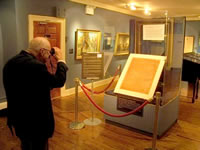 |
| Click to enlarge |
|
| Exposing Americans to the Declaration's Original Glory |
Such unexpected twists in time and new revelations of circumstance are what draws those interested in history to study these early documents with a whole new eye. “History comes to life in these special moments said Hugh Smith of Firelock Fireproof Modular Vaults, “to view Independence National Historical Park’s copy in person at Independence Hall as the guest of Curator Robert L Giannini, III. Viewing the Anastatic Declaration flanked by two pristine William J. Stone engraved copies was a singular experience for me. Giannini’s great enthusiasm for these early documents brought this period to life.”
The park now has the ability to showcase a set of documents that truly reflects what the Declaration looked like at its inception. It is hoped that these documents will soon be on display along with other 19th century printings at the reconstructed Declaration House at 7th and Market Streets in Philadelphia, which holds significance as the location where Jefferson wrote the Declaration’s first draft on his lap desk.
It is in this spirit of exposing citizens to the document’s original glory that Lingenfelter has decided to tour his copy around the country to be displayed in historic venues and State Archives. Through this tour, citizens will be re-introduced to the most revered document in American history “and perhaps the world” and reflect on its true meaning.
Appropriately, the sponsors for this tour will be Chapter members of the Association of Records Managers and Administrators from around the nation, who will bond together to promote this document in its various exhibition sites.
Time and again the government sought to make the Declaration of Independence a true document of the people through various attempts at replication. In hindsight, some may view the use of the anastatic process as a tragedy, while others may contend that these two anastatic facsimile sisters find themselves in a unique place in history.
Records managers would view John Jay Smith’s efforts as a legitimate attempt to preserve a document through redundancy and dispersion. These techniques are still in use today. The Anastatic Declarations can be viewed as a serious attempt to help the document survive the wages of time. In this regard, the anastatic facsimiles play a role in preservation even more important than that of the Stone or Dunlap copies, as an Anastatic Declaration is an exact replica of the original measuring 2 feet, 6 inches by 2 feet, 1 inches.
Each of the various methods used certainly created documents of high intrinsic and historical value, but the Anastatic Declaration provides a more accurate understanding of what one should envision when imagining the original engrossed Declaration of Independence, with the evidence of 56 men who were willing to risk treason “and a certain death sentence” in exchange for true liberty.
I for one believe that two surviving near-perfect copies of the original in place of one diminished and faded copy is a bargain well made. Future generations will be able to view the original as it was viewed by its authors, with a sense of wonder at the import of every last word.
Before the discovery of the Anastatic Declaration we could only assume the Stone engraving of the Declaration to be accurate. In comparison they are nearly identical.It is only conjecture to place a monetary value on the Anastatic Declaration. However, putting the document on a nationwide tour, allowing citizens to unite in acknowledging what the Declaration of Independence has meant to this country and the world is nothing short of priceless!
|
|
| |
| Additional Notes |
[1] The William Penn original Deed is held in the Longwood Garden Museum Vault in pristine condition within a specially designed FIRELOCK Archives Vault.
[2] An early advocate of anastatic printing in America was Edgar Allen Poe who was very enthusiastic in his support. Writing in the Broadway Journal of April 12 1845, Poe declared “it is the province for Anastatic Printing to revolutionize the world.” He used the process himself for a circular letter to potential subscribers of the Broadway Journal in November 1845 and describes the method: “Let us take, for example a page of this journal, we dampen the leaf with a certain acid diluted and then place it between two leaves of blotting paper to absorb superfluous moisture. We then place the printed side in contact with a zinc plate that lies on the table. The acid in the interspaces between the letters immediately corrodes the zinc but the acid on the letters themselves has no such effect having been neutralized by the ink. Removing the leaf at the end of five minutes, we find a reversed copy in slight relief of the printing on the page “in other words we have a stereotype-plate, from which we can print a vast number of absolute facsimiles of the original printed page-which latter has not been at all injured in the process, that is to say, we can still produce from it, or from any impression of the stereotype plate-new stereotype plates ad libitum Any engraving, or any pen-an ink drawing, any MS can be stereotyped in precisely the same manner.” |
|
|
|

